Surgical treatment indications and outcomes in patients with spinal metastases in the cervicothoracic junction (CTJ)
- PMID: 29382354
- PMCID: PMC5791728
- DOI: 10.1186/s13018-018-0732-2
Surgical treatment indications and outcomes in patients with spinal metastases in the cervicothoracic junction (CTJ)
Abstract
Background: The cervicothoracic junction (CTJ) site accounts for approximately 10% of all spinal metastases. The complex anatomical and biomechanical features increase the difficulty in surgical treatment of the CTJ metastases. However, few studies in the literature on surgical treatment for spinal metastases are focusing on this special area. The aim of this study was to evaluate the surgical outcome of patients with CTJ metastases and analyze the prognostic factor for the postoperative survival.
Methods: Total of 34 patients with CTJ metastases who underwent surgery in our department were retrospectively analyzed. We evaluated records for the details of medical history, treatment, surgery, radiographic imaging, and follow-up. Outcomes were assessed by overall survival as well as modified Tokuhashi score, SINS, Frankel grade, visual analog scale (VAS), and Karnofsky Performance Status (KPS).
Results: The entire patients' median survival time was 12.4 months (range, 3.5-36.2 months). Pain improved in 32 patients (94.12%), and the postoperative VAS scores were significantly improved compared with preoperative data. Majority of patients (71%) maintained or improved their Frankel scores 1 year after surgery. KPS scores improved in 13 patients (38%), remained stable in 19 (56%), and worsened in 2 (6%) postoperatively. Notably, patients with neurological deficit that did not improve after surgery had significantly worse median survival than those who had either no deficit or who improved after surgery. There were no instrumentation failures in this study.
Conclusions: Surgical treatment is effective for patients of CTJ metastases, with a tolerable rate of complications. Remained or regained ambulatory status predicted overall survival. Thus, prompt and aggressive decompressive surgery is recommended for CTJ metastases patients with neurological impairment.
Keywords: Cervicothoracic junction; Retrospective study; Spinal metastases; Surgical treatment; Survival.
Conflict of interest statement
Ethics approval and consent to participate
All procedures performed in this study involving human participants were approved by the Ethics Committee of the First Affiliated Hospital of Sun Yat-sen University. Informed consent was taken from all patients involved in this study.
Consent for publication
Not applicable.
Competing interests
The authors declare that they have no competing interests.
Publisher’s Note
Springer Nature remains neutral with regard to jurisdictional claims in published maps and institutional affiliations.
Figures
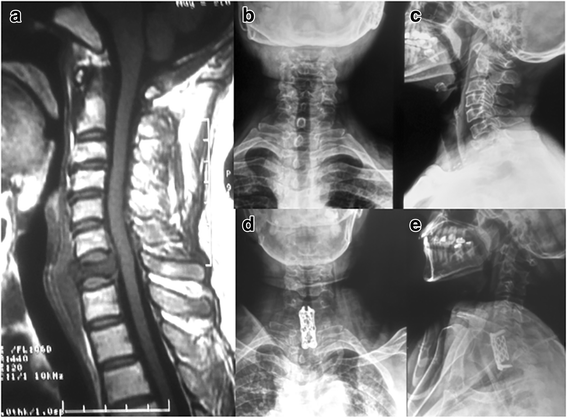
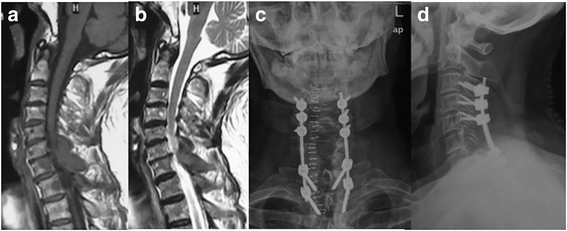
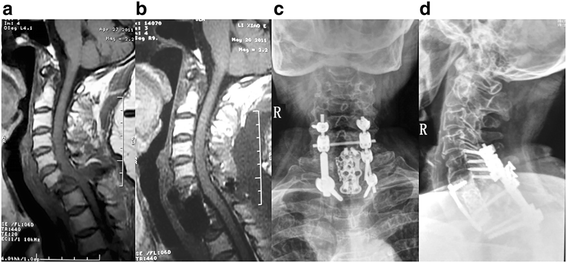
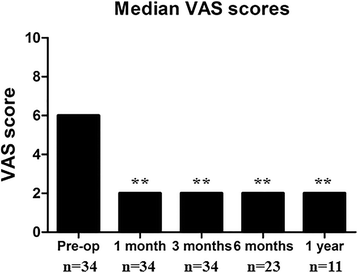
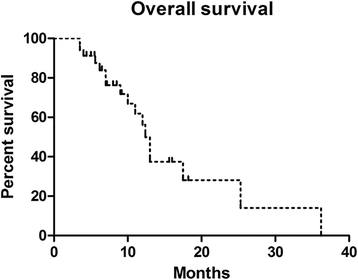
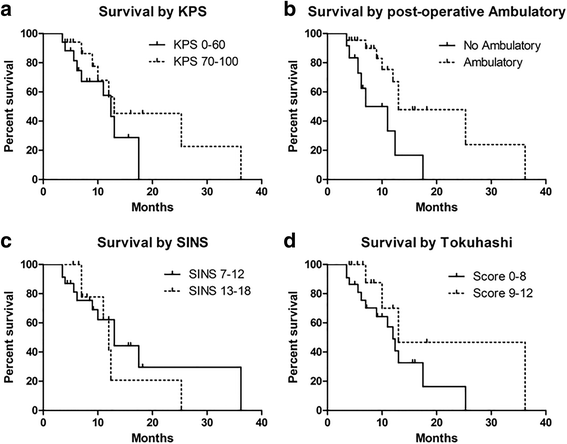
Similar articles
-
Outcomes and effectiveness of posterior occipitocervical fusion for suboccipital spinal metastases.J Neurosurg Spine. 2017 May;26(5):554-559. doi: 10.3171/2016.10.SPINE16392. Epub 2017 Feb 24. J Neurosurg Spine. 2017. PMID: 28291404
-
Single-stage posterior decompression and stabilization for metastasis of the thoracic spine: prognostic factors for functional outcome and patients' survival.Spine J. 2012 Dec;12(12):1083-92. doi: 10.1016/j.spinee.2012.10.015. Epub 2012 Nov 15. Spine J. 2012. PMID: 23168136
-
Surgical management of spinal metastases involving the cervicothoracic junction: results of a multicenter, European observational study.Neurosurg Focus. 2021 May;50(5):E7. doi: 10.3171/2021.2.FOCUS201067. Neurosurg Focus. 2021. PMID: 33932937
-
Surgical treatment of tumors involving the cervicothoracic junction.Neurosurg Focus. 2003 Nov 15;15(5):E3. doi: 10.3171/foc.2003.15.5.3. Neurosurg Focus. 2003. PMID: 15323460 Review.
-
The cervicothoracic junction.Neurosurg Clin N Am. 2007 Apr;18(2):365-71. doi: 10.1016/j.nec.2007.02.012. Neurosurg Clin N Am. 2007. PMID: 17556139 Review.
Cited by
-
What is the Optimal Management of Metastatic Spine Patients With Intermediate Spinal Instability Neoplastic Scores: To Operate or Not to Operate?Global Spine J. 2025 Jan;15(1_suppl):132S-142S. doi: 10.1177/21925682231220551. Global Spine J. 2025. PMID: 39801116 Free PMC article.
-
Surgical outcomes and risk factors for poor outcomes in patients with cervical spine metastasis: a prospective study.J Orthop Surg Res. 2021 Jul 3;16(1):423. doi: 10.1186/s13018-021-02562-8. J Orthop Surg Res. 2021. PMID: 34217343 Free PMC article.
-
Functional outcomes in the management of cervicothoracic junction tuberculosis.Surg Neurol Int. 2022 May 13;13:198. doi: 10.25259/SNI_167_2022. eCollection 2022. Surg Neurol Int. 2022. PMID: 35673661 Free PMC article.
-
Systemic considerations for the surgical treatment of spinal metastatic disease: a scoping literature review.Lancet Oncol. 2022 Jul;23(7):e321-e333. doi: 10.1016/S1470-2045(22)00126-7. Lancet Oncol. 2022. PMID: 35772464 Free PMC article.
-
A systematic review of MIS and open decompression surgery for spinal metastases in the last two decades.J Clin Orthop Trauma. 2021 Sep 25;22:101596. doi: 10.1016/j.jcot.2021.101596. eCollection 2021 Nov. J Clin Orthop Trauma. 2021. PMID: 34631409 Free PMC article. Review.
References
Publication types
MeSH terms
LinkOut - more resources
Full Text Sources
Other Literature Sources
Medical

